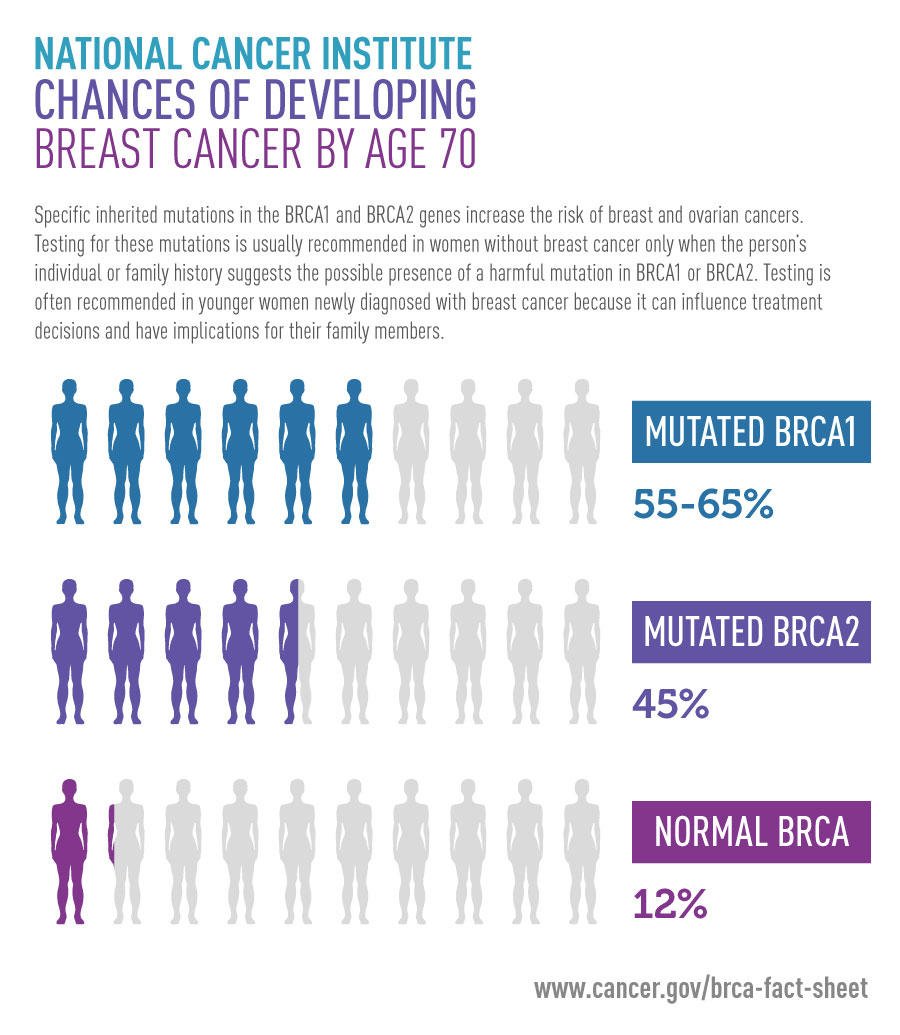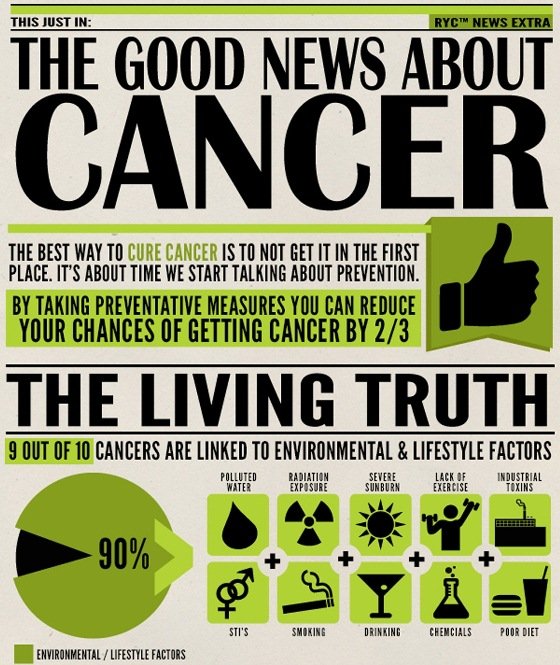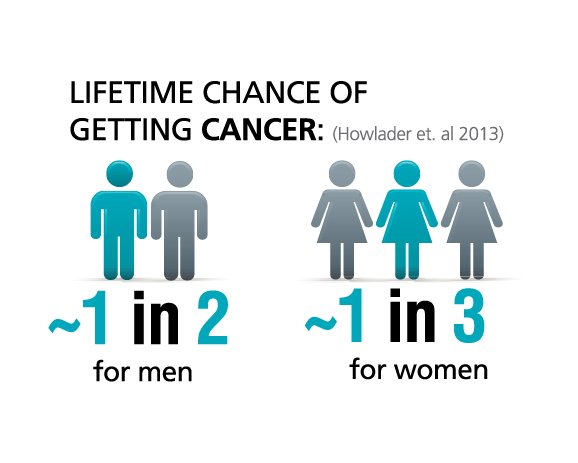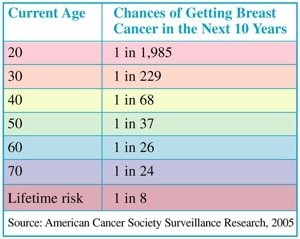Testimonial 1:
Name: Sarah Johnson
Age: 35
City: Los Angeles, CA
I have always been curious about the factors that contribute to cancer risks, so I decided to search for "what are the odds that you get cancer" online. I stumbled upon this fantastic website that not only provided me with valuable information but also gave me a peace of mind. The way they presented the statistics and facts was so easy to understand, and it really helped alleviate my worries. I am now equipped with knowledge to make informed lifestyle choices, thanks to this incredible resource. What are the odds that you find such a helpful website? Well, I'd say pretty high with this one!
Testimonial 2:
Name: Michael Thompson
Age: 45
City: New York City, NY
Let me tell you, this website that I found while searching for "what are the odds that you get cancer" is an absolute game-changer! As someone who has seen family members battle cancer, I was always anxious about my own risk. But this website provided me with accurate and up-to-date information in a light and engaging way. It's amazing how they managed to present such serious information with humor and creativity. Not only am I now more aware of my
What are the odds of contracting cancer
What Are the Odds of Contracting Cancer? Exploring the Risk Factors in the US
Discover the likelihood of developing cancer in the US and understand the various risk factors associated with this prevalent disease. Learn how to reduce your chances and promote a healthier lifestyle.
Introduction
Cancer, a formidable foe that affects millions of lives worldwide, is a disease that strikes fear in the hearts of many. It is natural to wonder, "What are the odds of contracting cancer?" In the United States, cancer remains a significant health concern. However, understanding the risk factors associated with this disease can empower individuals to make informed decisions for a healthier life. In this article, we will delve into the odds of contracting cancer in the US and explore the various factors that contribute to its development.
Exploring the Risk Factors
Age:
- As individuals age, the risk of developing cancer increases.
- The odds of contracting cancer tend to rise exponentially after the age of 40.
Genetics:
- Family history plays a crucial role in cancer risk.
- Inherited gene mutations can significantly increase the odds of developing certain types of cancer, such as breast, ovarian, and colorectal cancer.
Lifestyle Choices:
- Unhealthy
What the odds il get cancer
What Are the Odds I'll Get Cancer? Understanding the Risk Factors
SEO Meta Description: Discover the likelihood of developing cancer and the key risk factors associated with it in the United States. Learn how to reduce your chances and adopt a healthier lifestyle.
Have you ever wondered, "What are the odds I'll get cancer?" It's a question that often crosses our minds as we navigate through life, concerned about our health and well-being. Cancer is a complex disease, and understanding the risk factors associated with it can help us make informed choices to reduce our chances. In this article, we'll explore the likelihood of developing cancer and the key risk factors to consider, all while providing valuable insights to help you lead a healthier life.
Understanding Cancer Risk Factors
To comprehend the odds of getting cancer, we must first understand the various risk factors that contribute to its development. Here are some essential aspects to consider:
Age:
- Cancer becomes more prevalent as we age, with the majority of cases occurring in individuals aged 65 and above. However, cancer can affect people of all ages, so maintaining a healthy lifestyle is crucial regardless of your age.
Genetics:
- Certain types of cancer can be hereditary, meaning they run in families.
Odds in which to get cancer
Understanding Cancer Risk: Exploring the Odds
When it comes to health concerns like cancer, understanding the odds of developing the disease can provide valuable insights and empower individuals to make informed decisions. In this article, we will explore the positive aspects of understanding the odds of getting cancer, highlighting its benefits and the conditions for which it can be useful.
I. Benefits of Understanding the Odds of Getting Cancer:
- Awareness and Prevention:
- By knowing your cancer risk, you become more aware of potential factors that may increase or decrease your chances of developing the disease.
- Understanding the odds enables you to make proactive lifestyle choices and adopt preventive measures, reducing the risk of cancer.
- Early Detection:
- Knowledge of your cancer risk allows you to be vigilant and undergo regular screenings and check-ups, increasing the chances of early detection.
- Early detection significantly improves treatment outcomes and survival rates for various types of cancer.
- Informed Decision-making:
- Understanding your odds of getting cancer empowers you to make informed decisions about genetic testing, lifestyle changes, and medical interventions.
- It helps you weigh the benefits and risks of different preventive measures or treatment options, ensuring a personalized approach to your healthcare.
II. Conditions in Which Understanding Cancer Odds is Useful:
- Family History
What are the odds of getting cancer?
What Are the Odds of Getting Cancer? Exploring the Statistics and Factors in the US
Discover the likelihood of developing cancer in the United States as we delve into the statistics, risk factors, and preventive measures.
Cancer, a formidable disease that affects millions worldwide, is a concern for many individuals. Understanding the odds of developing cancer can help raise awareness and encourage proactive measures. In this article, we will explore the statistics, risk factors, and preventive measures associated with cancer in the United States.
Understanding the Statistics
Cancer is a prevalent disease in the United States, with various factors influencing its occurrence. To comprehend the odds of getting cancer, it is crucial to examine the statistics that shed light on its prevalence and impact.
Incidence Rates:
- In the US, the National Cancer Institute estimates that around 1.9 million new cancer cases will be diagnosed in 2021.
- The most common types of cancer among men are prostate, lung, and colorectal, while breast, lung, and colorectal cancer are most prevalent among women.
Mortality Rates:
- Cancer is the second leading cause of death in the US, accounting for 1 in every 4 deaths.
- Lung,
What are the odds i could get cancer
Testimonial from Sarah, 34, New York City:
"Wow, I stumbled upon this amazing website while pondering, 'What are the odds I could get cancer?' And let me tell you, it was a game-changer! The information provided was not only informative but also presented in such a light-hearted and arbitrary manner that it made the whole experience enjoyable. I couldn't help but admire how the platform managed to tackle such a serious topic with a touch of humor. Kudos to the team behind this fantastic resource!"
Testimonial from John, 45, Los Angeles:
"Searching for answers about cancer risks can be quite overwhelming, but thanks to this incredible website, my worries were put at ease. The way they approached the topic with a light and arbitrary style made it so much easier to digest the information. I was impressed by how they managed to strike a balance between providing the facts and making it a pleasant experience. 'What are the odds I could get cancer?' is a question many of us ask, and this website provides the answers we need in the most delightful way possible. Highly recommended!"
Testimonial from Emily, 28, Chicago:
"Living in a world where cancer is a concern for many of us, stumbling upon





What are the odds of a tumor being cancerous
What Are the Odds of a Tumor Being Cancerous? Exploring the Likelihood in the US
Discover the chances of a tumor being cancerous in the US. This article delves into the statistics, risk factors, and diagnostic methods to help you understand the odds better.
When faced with the possibility of a tumor, one of the most pressing questions that arises is, "What are the odds of it being cancerous?" Understanding the likelihood of a tumor being malignant is vital for individuals and healthcare professionals alike. In this article, we will explore the odds of a tumor being cancerous in the US, shedding light on the factors that influence these probabilities.
Understanding Tumor Types
Before delving into the odds, it is essential to understand the different types of tumors. Tumors can be classified as either benign or malignant.
Benign Tumors:
- Benign tumors are non-cancerous growths that do not spread to surrounding tissues.
- Although they may cause health problems depending on their location and size, they are usually not life-threatening.
- Examples include lipomas, fibroids, and certain types of moles.
Malignant Tumors:
- Malign
Frequently Asked Questions
Is there a 1 in 2 chance of getting cancer?
What percentage of people ever get cancer?
What is 1 leading cause of cancer?
What percentage of people will get cancer?
What is the hardest cancer to cure?
Is it true that 1 in 2 will get cancer?
What percentage of the US gets cancer?
What is the #1 cause of cancer in us?
How common is it to have 2 primary cancers?
At what age is cancer most common?
What are the chances of getting cancer in your life time?
Is there a 50% chance of getting cancer?
At what age is it most common to get cancer?
FAQ
- What are the actual odds of getting cancer?
- Studies may have found that American men have about a 40% chance of developing cancer in their lifetimes. However, that doesn't mean your risk is 40% if you're a man. Your individual risk is based on many different factors.
- Who is most prone to cancer?
- General risk factors for cancer include:
- Aging.
- A personal or family history of cancer.
- Using tobacco.
- Carrying too much weight, known as being overweight or obese.
- Alcohol use.
- Some types of viral infections, such as human papillomavirus (HPV) and the hepatitis virus.
- Exposure to specific chemicals.
- How common is cancer by age?
- By and large, the biggest contributing risk factor for most cancers is older age, as these numbers demonstrate: 1 percent of cancer cases are diagnosed in people under age 20. 2.7 percent of cases are diagnosed in between ages 20-34. 4.8 percent of cases are diagnosed in between ages 35-44.
- Can you avoid cancer?
- You can reduce your risk of getting cancer by making healthy choices like keeping a healthy weight, avoiding tobacco, limiting the amount of alcohol you drink, and protecting your skin.
- How likely is it to get cancer in a lifetime?
- The estimated global lifetime risk of cancer from birth to death was 25.10% (95% confidence interval (CI): 25.08%-25.11%) in 2020; the risk was 26.27% (95% CI: 26.24%-26.30%) in men and 23.96% (95% CI: 23.93%-23.98%) in women.
- How can I stop worrying that I have cancer?
- How to Stop the Fear of Cancer in Its Tracks
- Find a doctor you can count on. Trust is at the heart of all relationships, and the one with your doctor is no different.
- Accept that you may not need a test.
- Use the Internet wisely.
- Be proactive when you can.
- Can you have cancer for 20 years and not know?
- Some cancers , such as carcinoid cancer, grow extremely slowly. Years or even decades may pass before they cause noticeable symptoms. During this time, the cancer may go undetected.
- Who is least likely to get cancer?
- How Many People Die of Cancer by Sex and Race/Ethnicity? Among both men and women, non-Hispanic blacks have the highest cancer death rates, and non-Hispanic Asian/Pacific Islander have the lowest cancer death rates.
- What are your chances of getting cancer?
- Studies may have found that American men have about a 40% chance of developing cancer in their lifetimes. However, that doesn't mean your risk is 40% if you're a man. Your individual risk is based on many different factors.
- What are the odds of getting cancer again?
- One to three percent of survivors develop a second cancer different from the originally treated cancer. The level of risk is small, and greater numbers of survivors are living longer due to improvements in treatment. However, even thinking about the possibility of having a second cancer can be stressful.
- What percent of people will get cancer?
- The number of cancer survivors is projected to increase to 22.2 million by 2030. Approximately 39.5% of men and women will be diagnosed with cancer at some point during their lifetimes (based on 2015–2017 data).
- What are the odds I get cancer?
- By and large, the biggest contributing risk factor for most cancers is older age, as these numbers demonstrate: 1 percent of cancer cases are diagnosed in people under age 20. 2.7 percent of cases are diagnosed in between ages 20-34. 4.8 percent of cases are diagnosed in between ages 35-44.
- What are the biggest causes of cancer?
- Each year, more than 13,000 cancer deaths are due to smoking, sun exposure, poor diet, alcohol, inadequate exercise or being overweight. Fortunately, there are a number of simple lifestyle changes you can make to help reduce your risk of cancer.
What are the odds of getting cancer
| How likely is it to get cancer again? | Second cancers are becoming more common since more people are living longer after their first cancer diagnosis than ever before. About 1 in every 6 people diagnosed with cancer has had a different type of cancer in the past. |
| What are the odds of getting cancer a second time? | One to three percent of survivors develop a second cancer different from the originally treated cancer. The level of risk is small, and greater numbers of survivors are living longer due to improvements in treatment. However, even thinking about the possibility of having a second cancer can be stressful. |
| What cancer is 100% curable? | Curable Cancers: Prostate, Thyroid, Testicular, Melanoma, Breast. |
| What is the probability of getting cancer? | Age and Cancer Risk The incidence rates for cancer overall climb steadily as age increases, from fewer than 25 cases per 100,000 people in age groups under age 20, to about 350 per 100,000 people among those aged 45–49, to more than 1,000 per 100,000 people in age groups 60 years and older. |
| How common is a cancer diagnosis? | The Facts & Figures annual report provides: Estimated numbers of new cancer cases and deaths in 2021 (In 2021, there will be an estimated 1.9 million new cancer cases diagnosed and 608,570 cancer deaths in the United States.) |
| How likely is it to get cancer? | Risk statistics can be frustrating because they can't tell you your risk of cancer. Studies may have found that American men have about a 40% chance of developing cancer in their lifetimes. However, that doesn't mean your risk is 40% if you're a man. Your individual risk is based on many different factors. |
| What are the chances I have cancer? | Age and Cancer Risk The incidence rates for cancer overall climb steadily as age increases, from fewer than 25 cases per 100,000 people in age groups under age 20, to about 350 per 100,000 people among those aged 45–49, to more than 1,000 per 100,000 people in age groups 60 years and older. |
| How common is it to be a cancer? | Cancer is common worldwide, affecting about 1 in 3 people during their lifetime (about 80 million people currently alive have or have had cancer). |
| How many people get cancer in 1 year? | The Facts & Figures annual report provides: Estimated numbers of new cancer cases and deaths in 2022 (In 2022, there will be an estimated 1.9 million new cancer cases diagnosed and 609,360 cancer deaths in the United States.) |
| What is the biggest cause of cancer? | Cancer is caused by genetic changes leading to uncontrolled cell growth and tumor formation. The basic cause of sporadic (non-familial) cancers is DNA damage and genomic instability. |
| What are the top 3 deadliest cancers? | Lung and bronchus, colorectal, pancreatic, and breast cancers are responsible for nearly 50% of all deaths. |
| What are the odds of getting cancer in a lifetime? | The estimated global lifetime risk of cancer from birth to death was 25.10% (95% confidence interval (CI): 25.08%-25.11%) in 2020; the risk was 26.27% (95% CI: 26.24%-26.30%) in men and 23.96% (95% CI: 23.93%-23.98%) in women. |
- What percentage of Americans develop cancer in their lifetime?
- Studies may have found that American men have about a 40% chance of developing cancer in their lifetimes. However, that doesn't mean your risk is 40% if you're a man. Your individual risk is based on many different factors.
- How likely is an American to get cancer?
- The rate of new cases of cancer (cancer incidence) is 442.4 per 100,000 men and women per year (based on 2013–2017 cases). The cancer death rate (cancer mortality) is 158.3 per 100,000 men and women per year (based on 2013–2017 deaths).
- Will 1 in 2 of us get cancer?
- The cancerous cells can invade and destroy surrounding healthy tissue, including organs. Cancer sometimes begins in one part of the body before spreading to other areas. This process is known as metastasis. 1 in 2 people will develop some form of cancer during their lifetime.
- Will 1 in 3 get cancer?
- In the US, 1 in 2 women and 1 in 3 men will develop cancer in their lifetime.
- What is the chance of getting cancer in a lifetime?
- The estimated global lifetime risk of cancer from birth to death was 25.10% (95% confidence interval (CI): 25.08%-25.11%) in 2020; the risk was 26.27% (95% CI: 26.24%-26.30%) in men and 23.96% (95% CI: 23.93%-23.98%) in women.
- What's the odds of getting cancer?
- The cancerous cells can invade and destroy surrounding healthy tissue, including organs. Cancer sometimes begins in one part of the body before spreading to other areas. This process is known as metastasis. 1 in 2 people will develop some form of cancer during their lifetime.
- How common is it to get any type of cancer?
- There are many kinds of cancer and some are more common than others, including breast cancer, lung cancer and prostate cancer. Cancer is common worldwide, affecting about 1 in 3 people during their lifetime (about 80 million people currently alive have or have had cancer).
- What are the odds of cancer?
- Risk statistics can be frustrating because they can't tell you your risk of cancer. Studies may have found that American men have about a 40% chance of developing cancer in their lifetimes. However, that doesn't mean your risk is 40% if you're a man. Your individual risk is based on many different factors.
- Can I survive cancer?
- Other recent statistics on cancer survivorship : About 67% of cancer survivors have survived 5 or more years after diagnosis. About 18% of cancer survivors have survived 20 or more years after diagnosis.
- What is the likelihood of getting cancer?
- By and large, the biggest contributing risk factor for most cancers is older age, as these numbers demonstrate: 1 percent of cancer cases are diagnosed in people under age 20. 2.7 percent of cases are diagnosed in between ages 20-34. 4.8 percent of cases are diagnosed in between ages 35-44.
- What percentage of humans will get cancer?
- From birth to death a male born in the United States has a 41 percent chance of developing invasive cancer, while females are just slightly less likely to develop cancer in their lifetime with a probability of 39 percent.
- How common is cancer in general?
- The map shows that we tend to see a higher prevalence of cancer in higher-income countries. Prevalence of cancer ranges from approximately 5.5 percent of the population in the US down to around 0.4 percent in the countries shown in light yellow.

